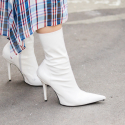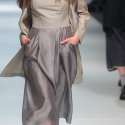- Europa
-
- Amstetten(7)
- Bad Schallerbach(1)
- Baden(4)
- Berg(1)
- Braunau am Inn(5)
- Bregenz(3)
- Bruck an der Mur(1)
- Graz(4)
- Hartberg(1)
- Innsbruck(5)
- Kemmelbach(1)
- Kitzbühel(4)
- Klagenfurt(5)
- Krems an der Donau(1)
- Kufstein(5)
- Leibnitz(1)
- Lienz(1)
- Liezen(1)
- Linz(5)
- Oetz(1)
- Punitz(1)
- Radstadt(1)
- Salzburg(5)
- St Polten(2)
- Steiermark(1)
- Steyr(1)
- Steyregg (1)
- Traun(3)
- Vienna(26)
- Villach(5)
- Völkermarkt(1)
- Wels(5)
- Wien(1)
- Wiener Neustadt(4)
-
- Aalst(1)
- Aarschot(2)
- Affligem(1)
- Anderlecht(5)
- Antwerp(11)
- Antwerpen(1)
- Arlon(6)
- Ath(2)
- Aubange(5)
- Bastogne (2)
- Blankenberge (1)
- Bruges(5)
- Brussels(15)
- Charleroi(5)
- Deinze(3)
- Dendermonde(1)
- Diest(2)
- Etterbeek(5)
- Geel(1)
- Genk(5)
- Gent(6)
- Geraardsbergen(1)
- Grimbergen (2)
- Hasselt(5)
- Heusden- Zolder(2)
- Ieper(1)
- Izegem(1)
- Knokke(4)
- Kortrijk(2)
- La Louviere(2)
- Leuven(5)
- Liege(4)
- Limburg(4)
- Lommel(1)
- Mortsel(1)
- Oostende(1)
- Turnhout(1)
-
- Chelyabinsk(1)
- Dubna(4)
- Gelendzhik(1)
- Irkutsk(1)
- Kaliningrad(1)
- Kazan(4)
- Krasnodar(3)
- Krasnoyarsk(1)
- Maykop(1)
- Moscow(50)
- Nizhny Novgorod(4)
- Novosibirsk(1)
- Omsk(1)
- Penza(1)
- Rostov-on-Don(2)
- Saint Petersburg(13)
- Samara(1)
- Saratov(1)
- Serpukhov (2)
- Sevastopol(3)
- Sochi(5)
- Stavropol(1)
- Surgut(1)
- Tyumen(2)
- Ufa(2)
- Vladivostok(3)
- Yekaterinburg (11)
-
- Alicante(8)
- Barcelona(113)
- Benalmadena(1)
- Benidorm(7)
- Castellón de la Plana(1)
- Denia(1)
- Estepona(1)
- Fuengirola (3)
- Ibiza(49)
- Jerez de la Frontera(1)
- Lanzarote(1)
- Las Palmas de Gran Canaria(5)
- Madrid(57)
- Malaga(9)
- Marbella(48)
- Murcia(1)
- Oviedo(1)
- Palma de Mallorca(48)
- Puerto Banus(3)
- Seville(1)
- Tarragona(1)
- Tenerife(7)
- Torrevieja(3)
- Valencia(9)
- Vigo(1)
- Zaragoza(1)
- Worldwide
The Allure of Old Money Style: Timeless Elegance
 The term "old money" typically refers to families or individuals who have maintained wealth over generations. This wealth often comes with a distinct sense of style—one that prioritizes understated elegance over ostentation. In contrast to flashy displays of wealth, old money style is characterized by its classic, refined look that communicates sophistication without needing to draw attention.
The term "old money" typically refers to families or individuals who have maintained wealth over generations. This wealth often comes with a distinct sense of style—one that prioritizes understated elegance over ostentation. In contrast to flashy displays of wealth, old money style is characterized by its classic, refined look that communicates sophistication without needing to draw attention.Key Characteristics of Old Money Style
Subtle Luxury
Old money fashion embraces high-quality materials and craftsmanship. Fabrics such as cashmere, silk, and fine wool are staples, often in muted colors and classic patterns. The emphasis is on subtlety; the luxury lies in the quality and timelessness of the pieces rather than in bold designs or excessive logos.
Tailored Clothing
A defining feature of old money style is impeccable tailoring. Clothes are often custom-made or well-fitted to create a polished appearance. Men might favor tailored suits and well-pressed shirts, while women often choose elegant dresses and tailored coats. The focus is on silhouette and form, ensuring that each piece complements the wearer's body perfectly.
Classic Accessories
Accessories play a vital role in enhancing the old money aesthetic. Opting for discreet yet sophisticated items, such as leather handbags, simple jewelry, and classic watches, speaks to an appreciation for heritage and quality. These items often have a story or history, further enriching their appeal.
The Importance of Heritage
Old money style is steeped in tradition. Many families have their own signature looks, passed down through generations. This cultural continuity not only reflects wealth but also a deep-rooted connection to history and values. Wearing pieces with a legacy can imbue a sense of pride and belonging.
Cultural Influences on Old Money Style
Geographic Nuances
Different regions have unique interpretations of old money style. In Europe, for instance, you might see a preference for classic British tailoring or Italian craftsmanship. In contrast, American old money often incorporates elements of preppy fashion, characterized by nautical themes and collegiate influences.
The Role of Icons
Historical figures and celebrities have also shaped perceptions of old money style. Icons such as Grace Kelly and John F. Kennedy epitomize the elegance associated with this aesthetic, setting standards for fashion that resonate with contemporary interpretations.
Embracing Old Money Style Today
Incorporating Elements into Your Wardrobe
To adopt aspects of old money style, begin by investing in a few high-quality, timeless pieces. Look for versatile items that can be mixed and matched, allowing for a range of outfits that feel polished yet comfortable. Choose neutral colors and classic cuts to ensure longevity in your wardrobe.
Mindful Consumption
Adopting old money style isn't solely about clothing; it's also about an attitude towards consumption. Emphasizing sustainability and quality over quantity reflects the principles of timeless style. Consider thrift stores or vintage shops to find unique pieces that embody character and history.
Conclusion: Timeless Appeal
Old money style represents a return to simplicity and elegance, offering a refreshing contrast to contemporary trends that often prioritize flash over substance. By focusing on quality, heritage, and timelessness, anyone can appreciate and integrate elements of this sophisticated aesthetic into their lives.









